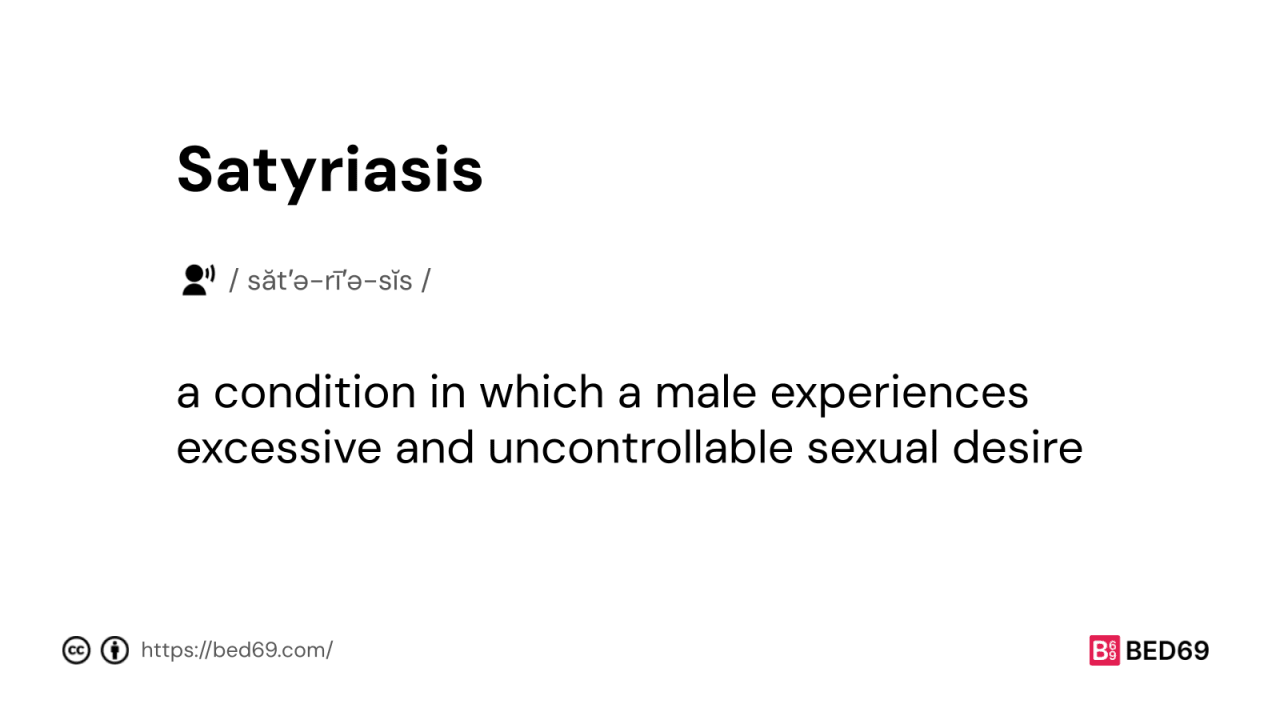What is Satyriasis?
Satyriasis is a type of hypersexuality in which a man experiences an intense and persistent desire for sexual activity, often to the point of obsession. This condition is also sometimes called “hypersexuality disorder” or “sexual addiction” and is characterized by a compulsive need for sexual gratification that interferes with a person’s daily life and relationships.
Symptoms of satyriasis may include excessive masturbation, frequent sexual fantasies, persistent urges to engage in sexual activity, and difficulty controlling sexual behavior.
Satyriasis pronunciation: / săt′ə-rī′ə-sĭs /

What Causes Satyriasis
Satyriasis can be influenced by various factors, such as psychological, biological, and environmental elements. Traumatic experiences, mental health conditions, or hormonal imbalances can contribute to the development of this condition. Additionally, societal influences and cultural norms regarding masculinity and sexuality may play a role in the manifestation of satyriasis.
Moreover, genetics and family history could also be potential factors in predisposing someone to hypersexuality. Childhood experiences, upbringing, and exposure to certain stimuli during formative years might impact an individual’s sexual behaviors later in life.
It’s essential to consider a holistic approach when exploring the causes of satyriasis, acknowledging the complex interplay of different factors that could contribute to the development of this condition.
Coping Strategies for Satyriasis
Coping with satyriasis involves seeking professional help from therapists or counselors specializing in sexual health. Therapy sessions can provide a safe space to discuss and address underlying issues contributing to excessive sexual desires. Engaging in cognitive-behavioral therapy may help individuals learn strategies to manage impulses and develop healthier coping mechanisms.
Additionally, creating a support network of trusted friends or family members can offer emotional support and encouragement throughout the recovery process. Practicing mindfulness techniques, such as meditation or deep breathing exercises, can help individuals stay grounded and regulate their emotions. Setting boundaries around sexual behaviors and establishing a routine that promotes overall well-being are crucial steps towards managing satyriasis effectively.
Remember, seeking help is a sign of strength, and with the right support and strategies, individuals can work towards achieving a healthier relationship with their sexuality and overall well-being.
Explore other interesting terms:
